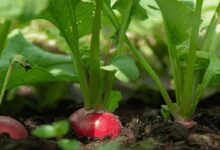Chickpea Pest Tips: Wilt disease is a serious problem in chickpea crop, take these measures immediately
Chickpea Pest Tips: In most locations, the gram crop is grown in November after it has been planted. However, wilt disease (Fusarium Wilt) might cause a significant loss in the gram crop during the winter season. However, by planting on schedule and caring for the crop properly, this issue may be avoided.

Dr. Mukul Kumar, Krishi Vigyan Kendra’s Plant Protection Specialist, said that in addition to lowering yield, insect and disease infestation may worsen if gram seeds are not treated or are not sown on time. Pod borer pests are likely to attack, particularly if sowing is done after mid-December.
If Gram exhibits these signs, use caution.
He said that one of the most dangerous issues facing the gram crop is wilt disease, which has the potential to wipe out the whole crop. Fusarium oxysporum species Psicari is the fungus that causes this illness, and it spreads via seeds and soil. Any stage of the plant’s development might be affected by this disease.
It first appears in isolated areas of the field before progressively spreading throughout it. The damaged plant first withers its leaves, and then it dries up completely. An incision close to the root reveals a dark substance. Experts say that before the crop begins to produce pods, the disease epidemic is more hazardous.
When Uktha disease affects the crop, spray this medication.
In order to avoid the illness, prompt action is crucial. Dr. Mukul Kumar advised spraying a 50 WP 0.2 percent solution of carbendazim on the crop’s roots as soon as Uktha disease signs start to show. In addition, the seeds must be treated before being sown. Timely crop monitoring and appropriate application of fungicides are essential for disease control.
In order to preserve soil quality and lower the likelihood of disease transmission, experts advise farmers to also use crop rotation and organic farming practices. In addition to increasing productivity, timely knowledge and prevention may also enhance crop quality.

